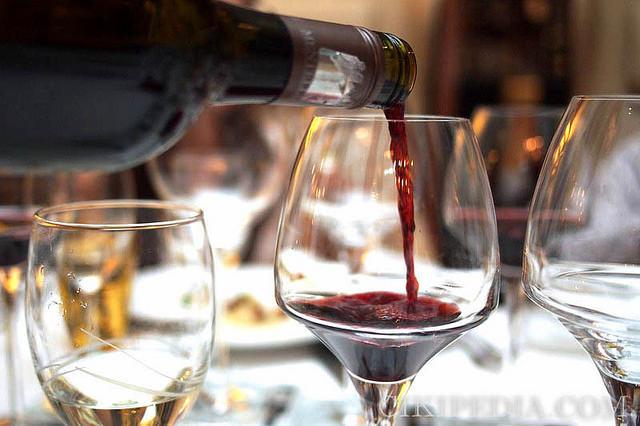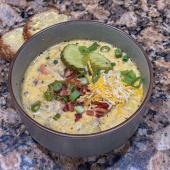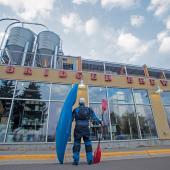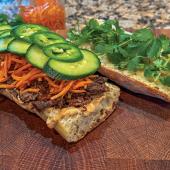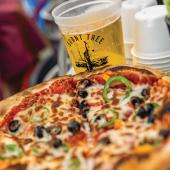Wine and Dine in Montana
The winer things in life.
Think of Montana. Get the image in your mind: steepled mountains high enough to hold skiable snow even in summer, meandering rivers chock full of crafty trout, and hundred-mile vistas in every direction.
Now picture this: fresh Hamachi with a glass of flowery sauvignon blanc; a rare French Burgundy to compliment a fresh cut of Montana beef; steamed manilla clams with a crisp Spanish white; a ruby-colored zinfandel paired with a wild game mixed grill.
Montana is far from cutting edge culinary scenes in New York City, San Francisco, or Paris. It is a world away from wine country. Here you are more likely to come across a diehard kayaker than a savvy sommelier.
Yet against all odds, Bozeman and the surrounding area has become a banana belt of fine food and wine in an otherwise arid culinary climate. Strolling down historic Main Street you'll find a row of restaurants offering everything from fresh sushi to aged Montana beef to tofu fries. Only 90 miles to the south, the Big Sky community is dotted with surprisingly sophisticated menus and award-winning wine lists to match them. And to the east, around Livingston, there is another smattering of world-class food and wine.
"Whether it is in Vermont, Europe, or St. Croix, a good restaurant has a good menu and a good wine list–they go hand in hand," declares Patrick Hurd of Big Sky's Rainbow Ranch.
THE SCENE
Not long ago a typical Montana wine list consisted of red, white, or pink poured from either a box or a jug. You can still find that, but the pervasive popularity of fine wine has influenced this region like nowhere else in the state.
"When I started wine sales here, we represented five wines," says Kelly Kulbeck, who has been the wine sales manager at Cardinal Distributing for nearly 20 years. "Today we carry almost 800 different labels."
The wine scene exploded in the area during the early '90s. Restaurateurs say the reason for that growth is threefold. First, the wine industry as a whole was sparked by a mass marketing push from California wineries that wanted their product more visible and accessible to the public. Second, the area was "discovered," in a way, with media attention from Robert Redford's film A River Runs Through It and Outside Magazine's article dubbing Montana "The Last Best Place." Big Sky Country was suddenly on the "in" list and winemakers wanted to see their products represented here. Finally, a handful of famous winemakers like to fish here, among them Jed Steele, Gary Andrus of Pine Ridge, Dennis and Steve Cakebread, and Robert Pahlmeyer. They not only made their own highly sought-after wines available to the greater Bozeman area, but also focused on educating the public.
Another reason for the abundance of wine in the area is the influence of the three beer and wine distributors located in Bozeman. They are integral in educating restaurant and retail staff on the nuances of wine. Responsible for countless winemaker dinners and wine festivals, they've created a knowledgeable clientele. Where there was once a snobbish stigma associated with drinking wine, there is now a casual chic. “Today's customer knows more about fine wine than ever before," says Bronken's wine manager, Bud Holtgreve.
That more than anything has been the driving force behind the proliferation of wine: people like to drink it. Some have brought sophisticated palates with them and others have acquired their own taste for wine. The result is a local restaurant scene offering upscale food and a selection of wine that parallels lists in high-end urban centers like Denver or Seattle.
"We have a broad cross-section of people who are interested in wine," claims Melissa Winegardner of Winegardner Wines. "They come from all different economic backgrounds–at wine events we see school teachers to stock brokers to trust funders and what they have in common is that they want to know more about wine."
Even as the economy slows to a recession, local distributors don't anticipate a slowdown in the wine market. According to Kulbeck, his company sells more wine in July and August now than it did over an entire year a decade ago. And Holtgreve says 50 percent of sales at Bronken's can be attributed to wine. "Wine is an affordable luxury and it's here to stay," Kulbeck contends.
THE PLAYERS
No one ever thinks of Montana as a culinary hotbed. Yet two decades ago restaurants like Chico Hot Springs outside of Livingston, the Gallatin Gateway Inn, and the Bistro in Bozeman were some of the first regional eateries to receive attention from national publications for their cuisine. But more than that, they've cultivated a local following and set the tone for today's hot restaurant scene.
"When I came here 30 years ago there was nothing I would really call a restaurant," says Russell Chatham, renowned landscape artist and owner of the Livingston Bar and Grill. "There were places you could go to find the biggest steak you'd ever seen and mounds of potatoes, but really good food and a glass of great wine were out of the question."
Today, eating and drinking is another facet of what makes this stretch of Montana so rich. It started with food, then wine just fell into place as people's palates grew more sophisticated. Restaurants such as Boodles now carry 22 wines by the glass, Buck's T-4 offers a $1,700 bottle of Domaine de La Romanee-Conti on its list, and The Grand in Big Timber keeps a special holding of Italian wine for the Antinori family.
In the last five years a handful of local restaurants have been granted the esteemed "Award of Excellence" by Wine Spectator magazine. Considered to be the premiere wine publication, the Spectator recognizes three different levels of excellence for wine lists and publishes the winners once a year. Diversity, quantity, and quality are all considered, although other subjective details factor into who wins. The Bistro, Boodles, Buck's T-4, Chico Hot Springs, Rainbow Ranch, Gallatin Gateway Inn and The Grand Hotel have received the magazine's respected first-level prize.
"More restaurants submit and receive the Spectator award in this area than anywhere else in the state," says Holtgreve.
Unlike a decade ago, you can now wine and dine your way from Pray to Big Sky in the private cellars of local restaurants. The elegant stone building at Chico Hot Springs was the first in the area. Peterson's in Livingston, Rainbow Ranch, and Boodles now also showcase their cellars in cozy dining rooms inspired by European designs. Built with special ambiance, these wine rooms show that the infatuation with wine is strong.
"People have higher expectations now than they ever have," says Colin Davis, general manager at Chico. "The customer is more educated and discerning about food and wine, so the result is incredible competition in the industry that forces us all to excel."
That friendly competition and a collective love for wine among restaurateurs have bolstered the culinary scenery in these small towns. With wines that are more food-friendly and readily drinkable now, says Tyler Hill, proprietor and chef at The Bistro, it is a natural part of a meal for most people. Other restaurant owners agree that the good food and wine in the area will only get better.
"It all comes down to passion," says Hill. "We have a passion for creating and serving great food, and wine is part of that."


